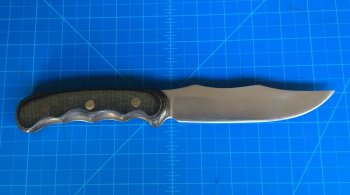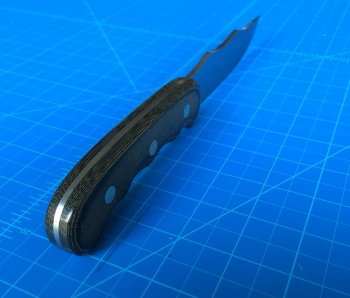Okay, this is my very first knife. I know that I have a LOT to learn, but I don't think it is too bad for a first attempt (That is what I keep telling myself at least).
I made a lot of mistakes along the way but I was determined to not scrap it, so I finished it as best I could. I totally caught the bug and plan to develop my skills over who knows how many years and make many more, including folders eventually.
comments are welcome.
- Steel: cpm 154 hardened at 1950 degrees and cryo treated in a dry ice and kerosene slurry before tempering twice at 425 degrees for two hours.
- Scales: Green and black micarta.
- design: inspired by a SOG I saw who's name I don't know.
- Tools: side grinder, 4 inch belt sander, files, and lots of sand paper.
I made a lot of mistakes along the way but I was determined to not scrap it, so I finished it as best I could. I totally caught the bug and plan to develop my skills over who knows how many years and make many more, including folders eventually.
comments are welcome.


